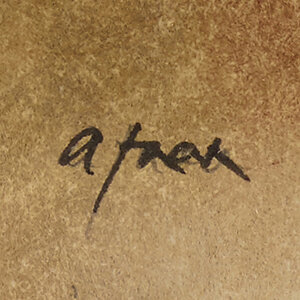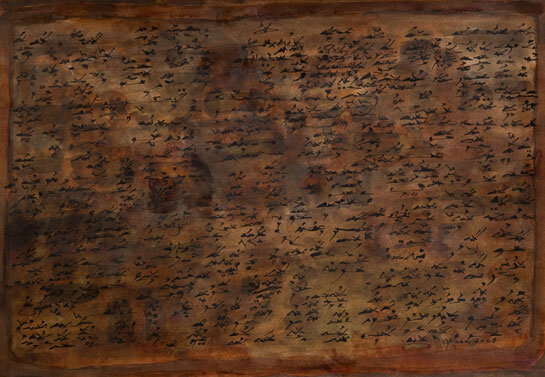


Last updated on Fri 5 March, 2010


MALIHEH AFNAN:
"TRACES, FACES, PLACES"
ROSE ISSA PROJECTS
269 KENSINGTON HIGH STREET, LONDON W8 6NA
March 5 - April 5 2010
“Maliheh Afnan’s career spans four decades and three continents. This solo exhibition accompanies the publication of a retrospective of her work: “Maliheh Afnan: Traces, Faces, Places” (edited by Rose Issa with a foreword by John Berger, Saqi Books, 2010). The exhibition and book crown a lifetime of prolific output, honoured recently at several landmark exhibitions: Taswir: Pictorial Mappings of Islam and Modernity at the Martin Gropius Bau Museum, Berlin (2009); Re-Orientations: Contemporary Arab Representations, at the European Parliament, Brussels (2008); The Dance of Pen and Ink, at The State Museum of Oriental Art, Moscow and The State Hermitage Museum, St Petersburg (2007-08); and Word into Art, at The British Museum, London (2006).
Born in Palestine to Persian parents, Afnan began to include scriptural elements in her paintings and drawings very early in her career as calligraphy has always interested her. This was partly a legacy from her childhood, when official papers and bills came in three languages – English, Hebrew and Arabic. She says that her method is to “write her paintings”, and the rhythmical surface of the Ecritures series – covered in dots, scratches, and wandering strokes – resemble a manuscript or musical score.
Emigration has been a recurring theme in Afnan’s life, twice as a result of politics – from Haifa to Beirut after the 1948 Arab-Israeli war, and Beirut to Paris during the Lebanese civil war in 1975 – and three times for personal reasons. The titles of her Paysages series say it all: Vestiges, What Remains, Once Upon a Place or My Tree while her imagined portraits, Personnages, are almost always elderly gentlemen, whose lives, hopes and disappointments show through their lightly drawn features.
Afnan’s most recent series, Veiled, brought her international critical acclaim. Following 9/11, when the world was focusing on the literal veiling of women in Islam, Afnan instead showed other kind of cover up – not of bodies or faces, but of concealing truth, character, feelings and intentions. She transformed the emotion behind everyday phrases – veiled anxiety, veiled agendas, veiled threats – into ink and gouache writings on paper that she covered with delicate coloured gauze. The result is a cloud that hovers over the text to express something more unsettling: Veiled Melancholia, Veiled Emotion, Veiled Confrontation, Veiled Strategy.
.
Join us in our endless discovery of modern and contemporary Arab art